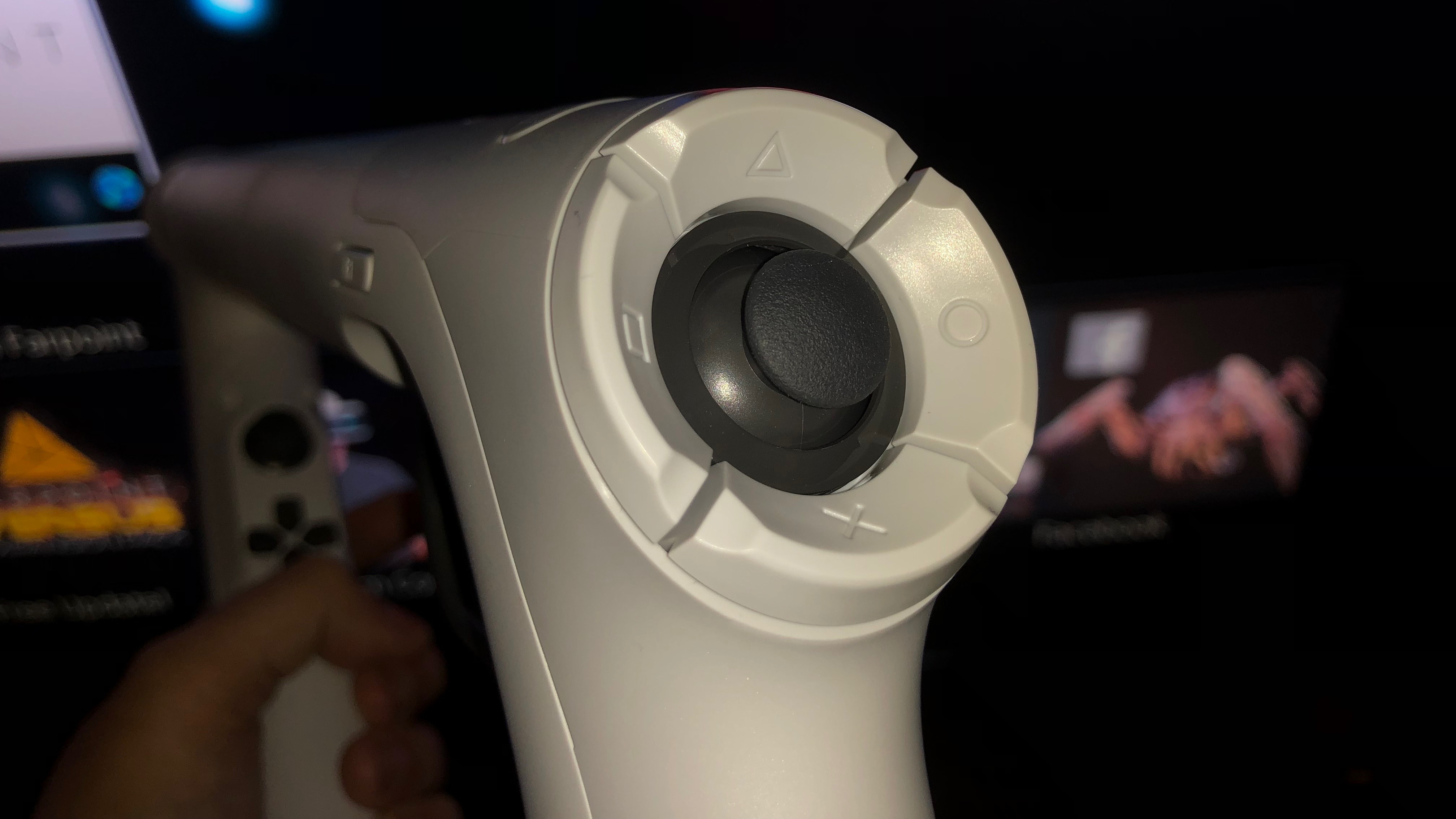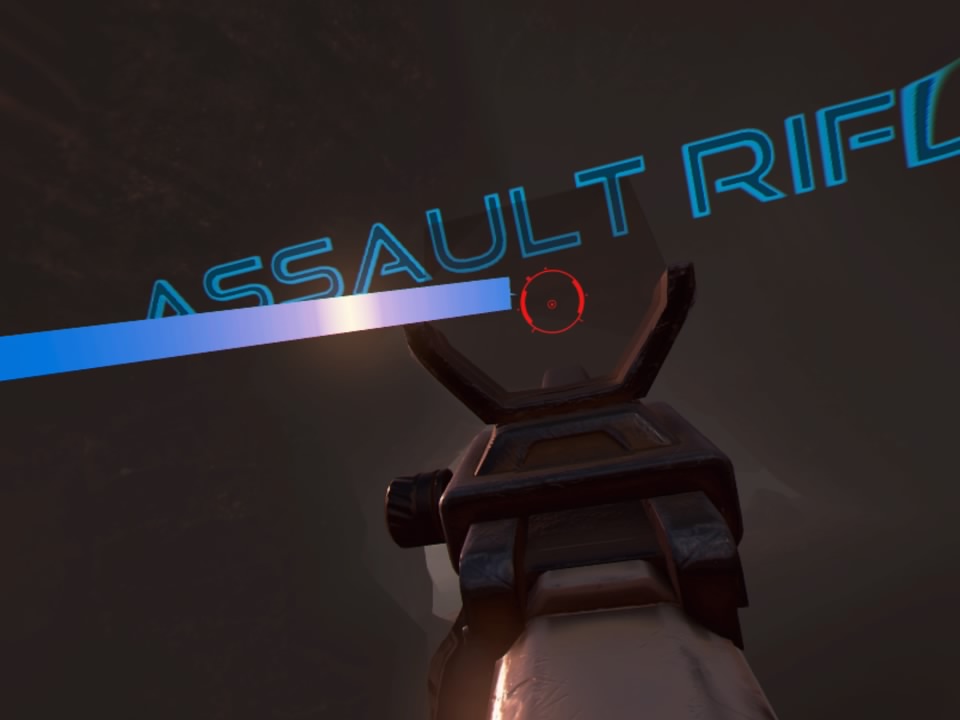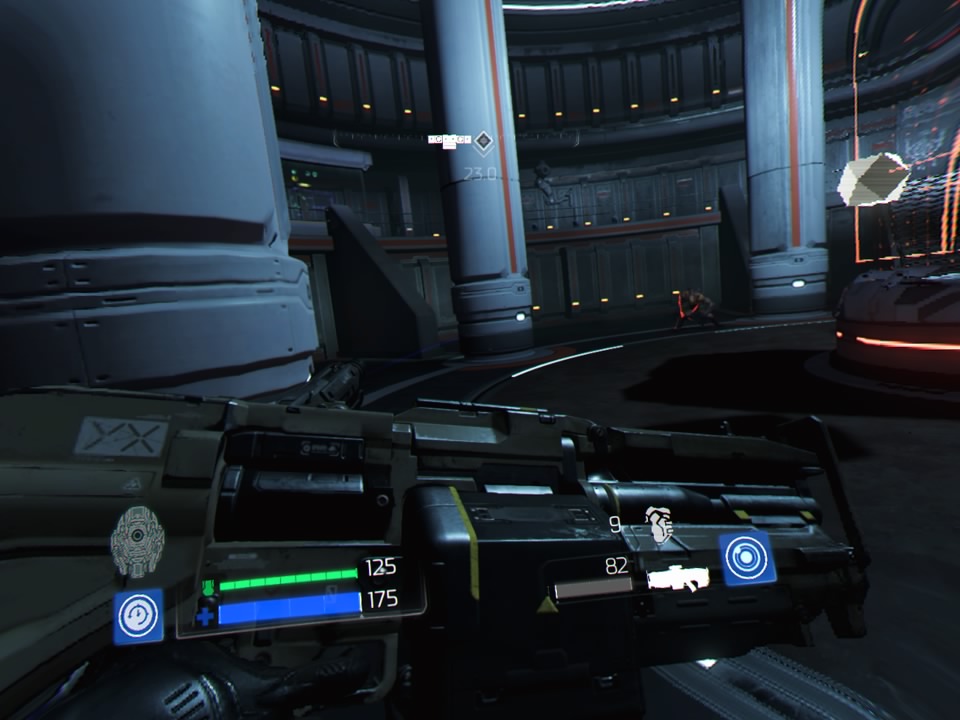Just like more than half of PlayStation VR’s 2 million users, I arrived late to the PSVR party, but waiting until last year meant that the platform had a robust library of games at reasonable prices. One of the games I missed was Farpoint, the mid-2017 first-person shooter that showcased Sony’s PlayStation VR Aim — a deliberately non-threatening wireless gun controller.
PlayStation VR Aim turns out to be a bigger step forward for VR controllers than Farpoint was for FPS games. Up until recently, I played PSVR titles with either a DualShock 4 or twin PlayStation Moves, each maligned by PC VR fans for falling short of Oculus’s Touch controllers and Valve’s perennially upcoming Knuckles. But I wanted to test PSVR Aim because unlike the DualShock 4 and Move controllers, Sony thoroughly developed this as a VR control solution, and it managed to fold 100 percent of the control options needed for FPS gaming into a novel design.

Above: The PlayStation VR Aim controller deftly evokes the general feel of a weapon without looking threatening to real-world observers.
Sony was in a no-win situation when designing PSVR Aim’s aesthetics. Ever since the U.S. Senate’s infamous video game violence hearings in the early 1990s, which saw Konami castigated over Lethal Enforcers’ gun and Nintendo knocked for the Super Scope 6 bazooka, console makers have shied away from making even vaguely realistic gun peripherals. So PSVR Aim instead looks like a trapezoidal tube with a big glowing ball on its front-facing tip. No one’s going to confuse this in real life with an actual weapon.

Above: PSVR Aim includes all of a DualShock 4’s controls, as well as all of a Move controller’s.
Yet Aim manages to do basically everything right as a FPS controller, nestling all of Sony’s DualShock joysticks and Move buttons into its edges and nooks. Holding Aim with two hands, you can access the full slate of PlayStation icon buttons in a circle on the back, joysticks on the back and inner front, and various additional buttons and triggers on the front, inner back, and top. Motion sensing, haptic feedback, and battery-powered Bluetooth are all included in the controller.

Above: Farpoint demonstrates how the PSVR Aim controller’s motion tracking can realistically simulate holding a two-handed gun.
The result of all this is the capability to enter a VR game like Farpoint and feel like you’re actually carrying a futuristic rifle — and broader toolset — while walking across the surface of an alien planet. Developer Impulse Gear lets you ease into using Aim by introducing basic movement, then basic marksmanship with the primary trigger, then a holographic scanning tool, and finally use of a secondary weapon. Only if you’re ready to use the second joystick for body turning should you seek that option out in the settings, and by that point, you’ll be using almost (but not) all of Aim’s features.

Above: Holding Aim up to your face lets you realistically use a scope on your rifle.
Developers have been simulating FPS weapon bounces and shifts during player movement for years, so seeing Farpoint’s rifle respond to your real-life positioning with Aim is both uncommon and empowering. You can physically draw the controller upward and close to your face to look through a virtual scope — a small but awesome visual effect — as well as using features such as laser sights, a grenade launcher, and a lightly recoiling automatic rifle, all with situation-appropriate haptic feedback and intuitive ergonomic gestures.

Above: PSVR Aim’s fine rifle position movement tracking lets you use the controller as a wand for scanning holographic objects.
Aim’s functionality isn’t a complete novelty, as arcade games since the Silent Scope and Time Crisis days used everything from second zoomed-in screens to ultra-heavy haptic feedback to simulate the way real guns work. But being able to immerse youself in an at-home experience by leveraging little more than a $299 VR headset and a $60 plastic tube — albeit elegantly designed ones — is something special. If there were more games for Aim, it would be a no brainer-recommendation for PSVR users.

Above: With the Aim controller, Doom VFR enables you to take full positional control of your right hand weapon.
It looks like that may be addressed at E3 this week. Bethesda’s Doom VFR is probably the best of a two-handful list of existing titles to support Aim, and will be followed up with a more Halo-like “bullet hell” title called Evasion. And though Bravo Team was a high-profile disaster, the similarly realistic Blood & Truth looks like it will be a single-player FPS hit, and Firewall: Zero Hour will offer team shooting and online play. I can’t wait to play all of these titles, plus pretty much anything else announced for Aim at E3.
Over the past six months I’ve spent with PSVR, I’ve felt that there’s something to the claim that Sony’s VR platform could really benefit from superior controllers. But Aim demonstrates pretty conclusively that a great alternative is already available for certain game genres. All it needs now is the software support to really shine.

